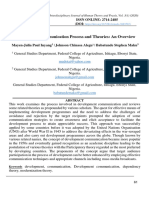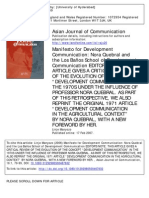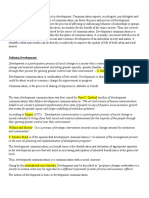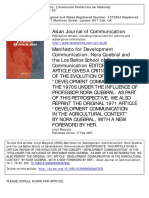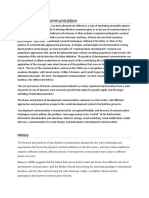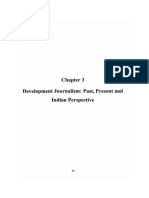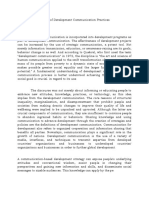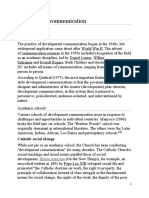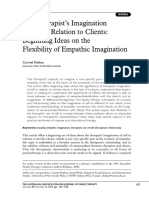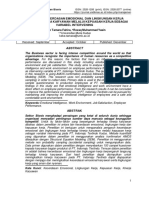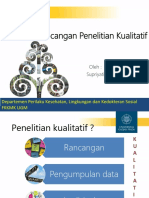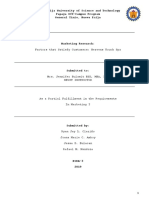0% found this document useful (0 votes)
81 views17 pagesWeek 3 4 And5
i. Development communication refers to using communication techniques to facilitate social development and positive social change. It aims to promote information sharing and participation to improve livelihoods in a sustainable manner.
ii. Development communication techniques include information dissemination, behavior change campaigns, social marketing, community participation, and communication for social change.
iii. Pioneers like Nora Quebral saw development communication as applying communication principles and techniques to accelerate a nation's transformation from poverty to economic growth and greater fulfillment of human potential.
Uploaded by
Amna ShahzadCopyright
© © All Rights Reserved
We take content rights seriously. If you suspect this is your content, claim it here.
Available Formats
Download as DOCX, PDF, TXT or read online on Scribd
0% found this document useful (0 votes)
81 views17 pagesWeek 3 4 And5
i. Development communication refers to using communication techniques to facilitate social development and positive social change. It aims to promote information sharing and participation to improve livelihoods in a sustainable manner.
ii. Development communication techniques include information dissemination, behavior change campaigns, social marketing, community participation, and communication for social change.
iii. Pioneers like Nora Quebral saw development communication as applying communication principles and techniques to accelerate a nation's transformation from poverty to economic growth and greater fulfillment of human potential.
Uploaded by
Amna ShahzadCopyright
© © All Rights Reserved
We take content rights seriously. If you suspect this is your content, claim it here.
Available Formats
Download as DOCX, PDF, TXT or read online on Scribd
/ 17








